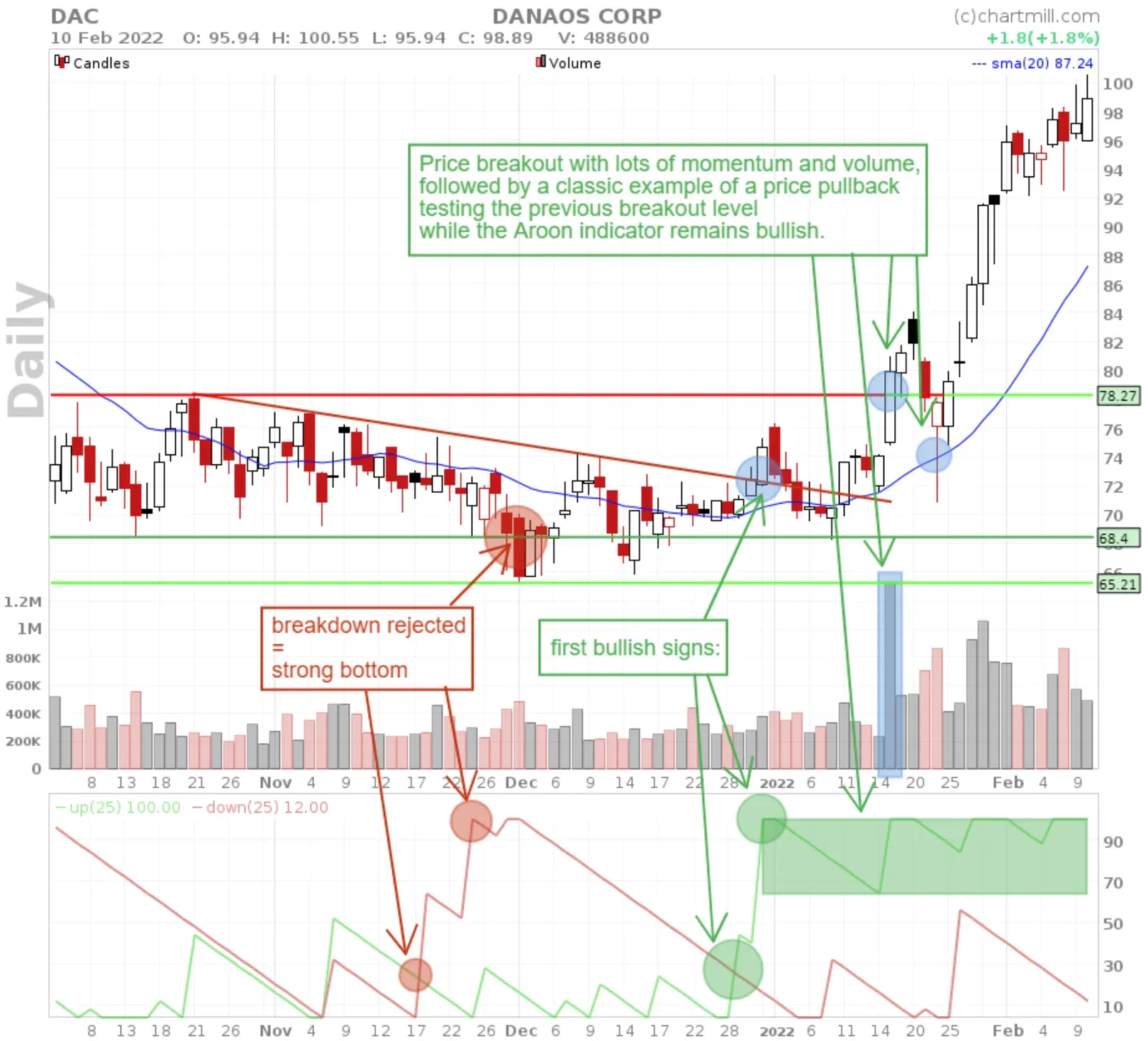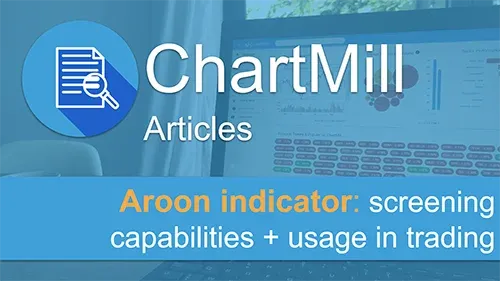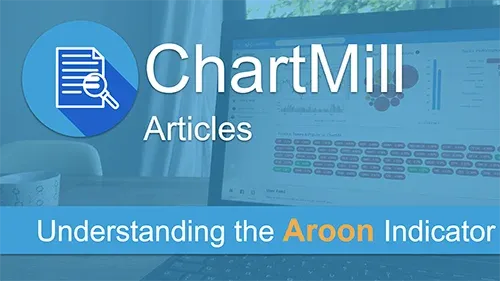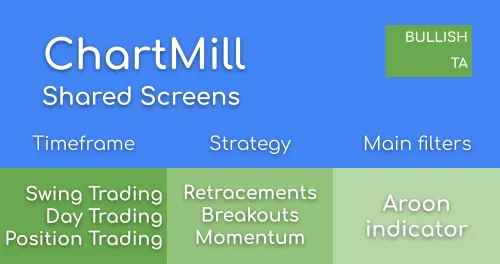The Aroon Screening Capabilities and How To Use this Indicator in a Trading Strategy
By Aldwin Keppens - reviewed by Kristoff De Turck
Last update: Apr 19, 2024
What exactly the Aroon indicator is and the many features this indicator has to offer, can be read here. In this follow-up article I will elaborate on the screening possibilities in the ChartMill platform. Furthermore I will use an example setup to describe how this indicator can make a practical contribution in your trading strategy.
Screening Options
ChartMill allows you to filter stocks based on Aroon indicator properties. To do so, go to the 'Stock Screener' section and select the 'Indicators' menu. In this menu you will find the filter option for the technical indicator 'Aroon'.
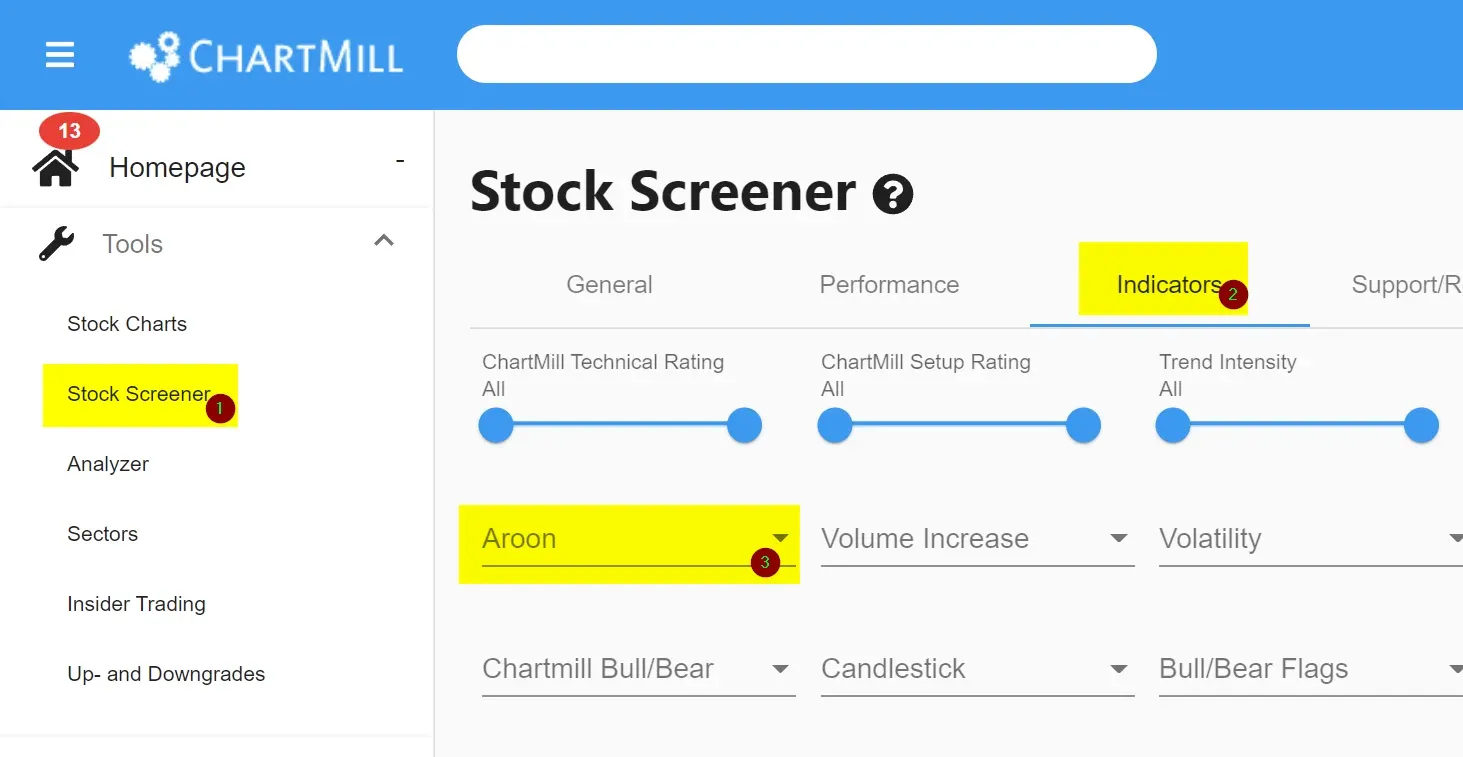
Open the dropdown menu by clicking on the inverted triangle next to the Aroon filter which will reveal the different options.
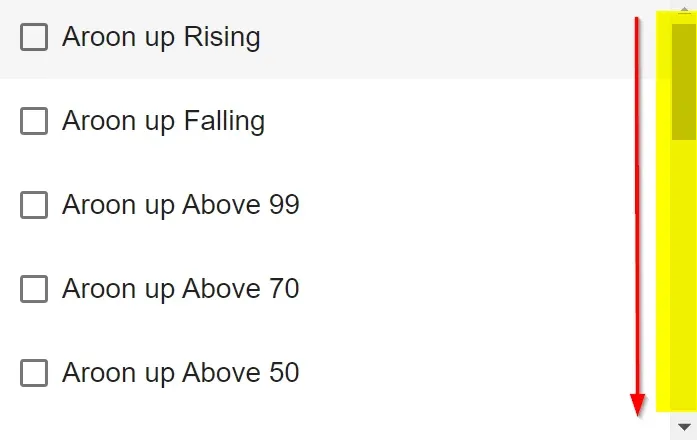
Multiple filtering options are available:
- Aroon-up / Aroon-down rising or falling
- Aroon-up / Aroon-down above or below 99
- Aroon-up / Aroon-down above or below 70
- Aroon-up / Aroon-down above or below 50
- Aroon-up / Aroon-down above or below 30
- Aroon-up / Aroon-down above or below 20
- Aroon Oscillator crosses zero from below or above
Some screening examples:
- Aroon-up higher than 50, rising and Aroon-down lower than 50
- Aroon-down higher than 99 en Aroon-up, decreasing, lower than 20
A predefined screening idea is also available in our 'trading ideas' section on the website. This screen allows you to find stocks that are in a consolidation phase.
Using the Aroon indicator in a trading strategy
As for any technical indicator, you should not use it in a vacuum as a stand-alone buy or sell signal. That is equally true for this indicator. Depending on how the Aroon-up and Aroon-down are shifting, we get early signals that detect new trends or indicate the beginning and end of consolidating periods.
Take a look at the chart below of Danaos Corp (NYSE: DAC) as of December 28, 2021. At the bottom of this chart, the Aroon indicator was added with default settings.
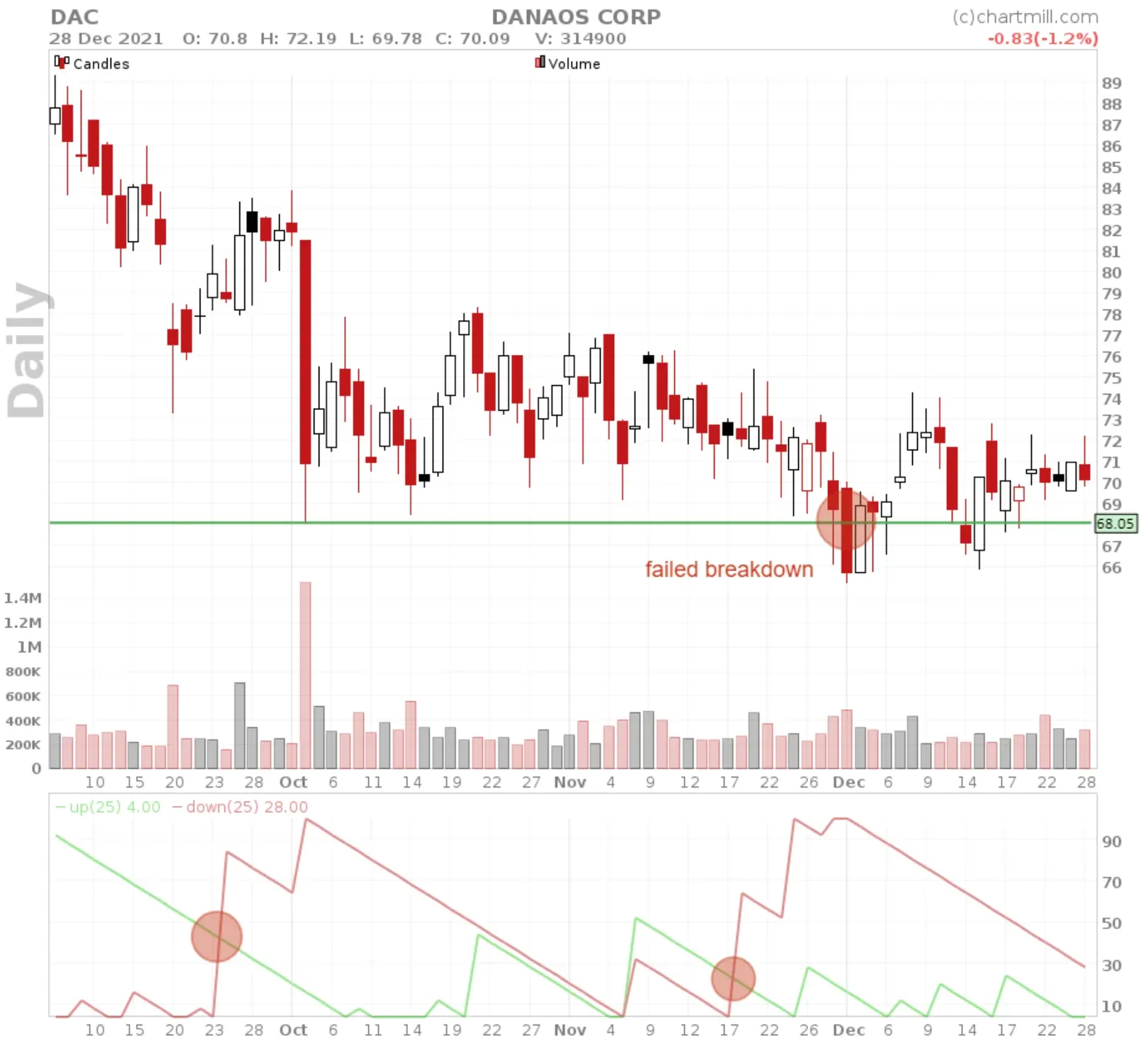
As shown on the chart, the stock has been in a negative trend since September 2021. The left red circle on date of September 23 shows the moment when the Aroon-down intersects the Aroon-up and rises above the 50-level. The indicator thus confirms the negative trend. Since September 23 until the last day on the chart (December 28, 2021), the Aroon-up has never exceeded the 50-level, while the Aroon-down shows two spikes to the 100-level. Only in the period from October 22 to about November 20 both the Aroon-up and Aroon-down are below the 50-level, indicating a sideways movement of the stock.
At the end of December, there was another downbreak and the Aroon-down rose for a second time to the 100-level. However, the downward movement lacked strength, after the initial price drop there was no further continuation and volume was also completely lacking. The Aroon-up may be quoting very low, but the fact that there were no new highs does not automatically mean that the price is falling. With no new lows being recorded, the Aroon-down once again fell below the 50-level. With both the Aroon-up and Aroon-down lower than 50, the price moved sideways again in late December.
The chart below is the same as above but a bit more zoomed in. A red downward trendline was added, which has been tested several times to date. Every attempt to get above the downward trendline has so far been countered by sellers entering the market.
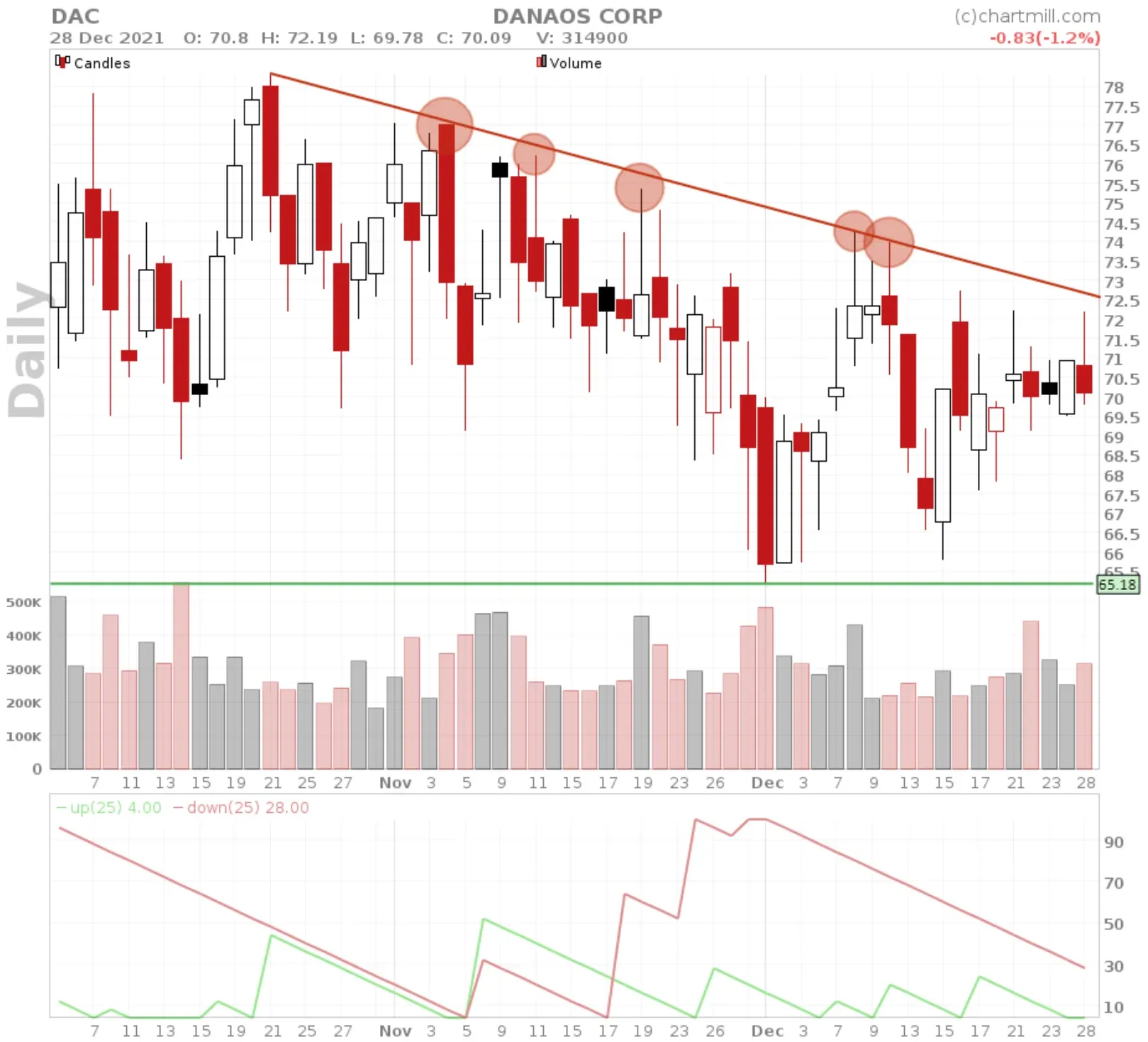
The chart at the end of December 2021 showed a stock that deserves a place in a watchlist of stocks that could potentially become interesting, depending on how the price evolves relative to the downward trend line and the movement of the Aroon indicator.
A first warning signal in that direction came from the Aroon indicator, precisely one day later, on December 29, 2021. The Aroon-up crossed the Aroon-down upward. However, both were still quoting below the 50 level and the price itself was still below the descending trendline.
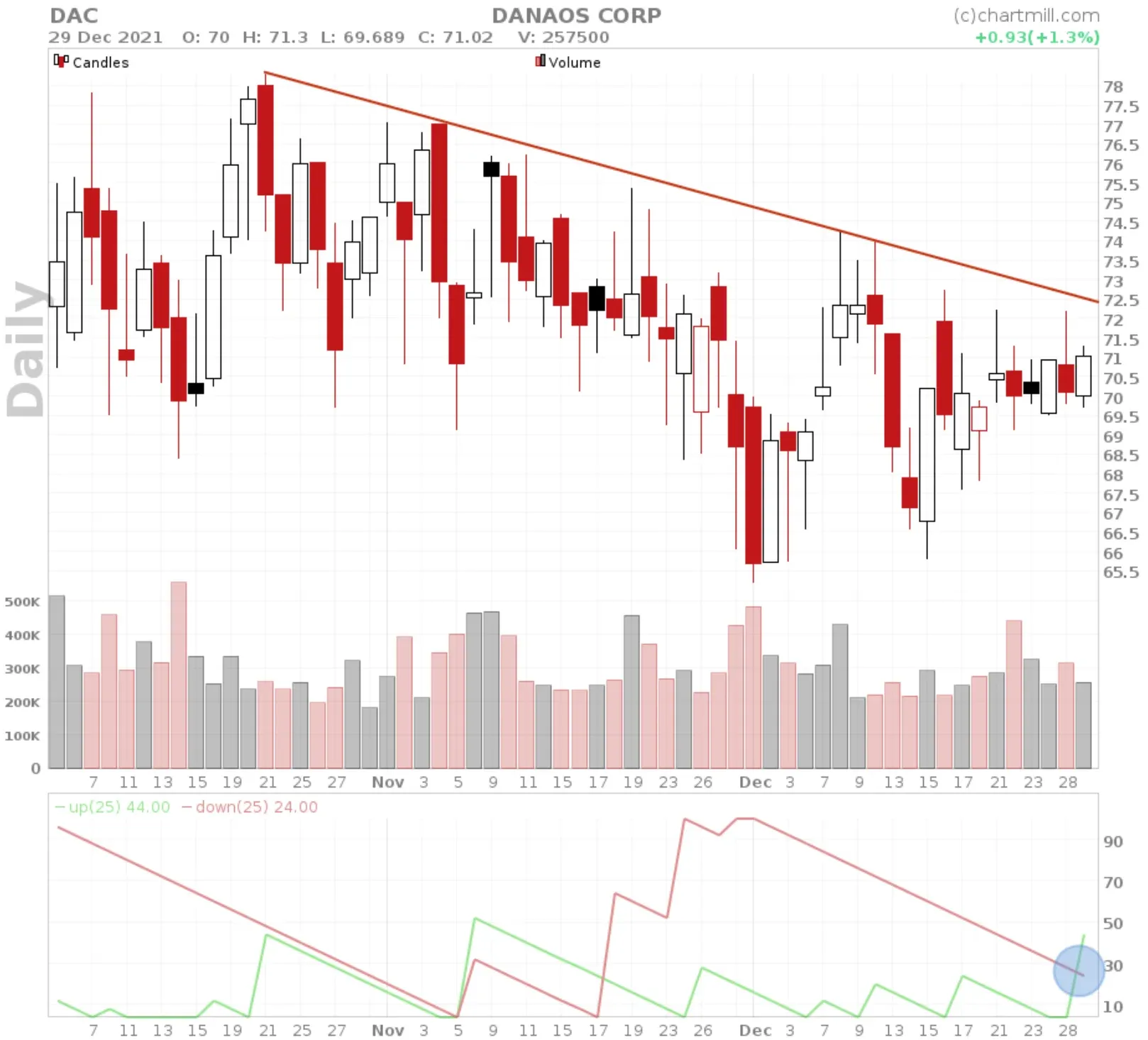
December 30, 2021:
Yet another attempt to overcome the red descending trendline, however, the move lacked strength. Moreover, the buying volume was substandard.
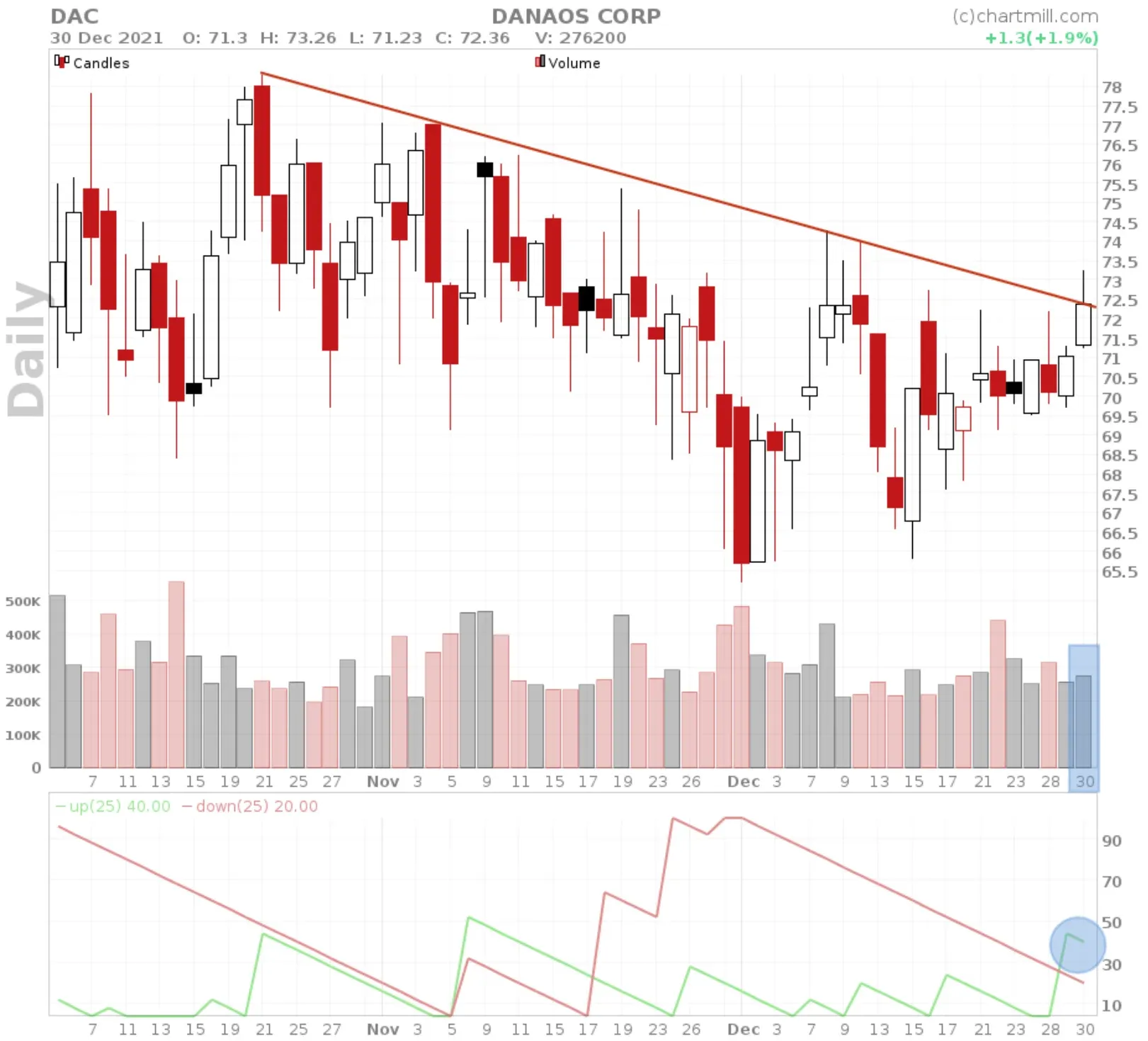
December 31, 2021:
A breakout with a close above the descending trendline and, in addition, an Aroon-up that broke out above the 50 level and continued to rise to 100. At the same time, the Aroon-down fell to +/- 20.
The Aroon indicator thus signals the start of a new rising trend as the three signals required to identify a new trend are met. see the first article for more in depth information about the different required signals
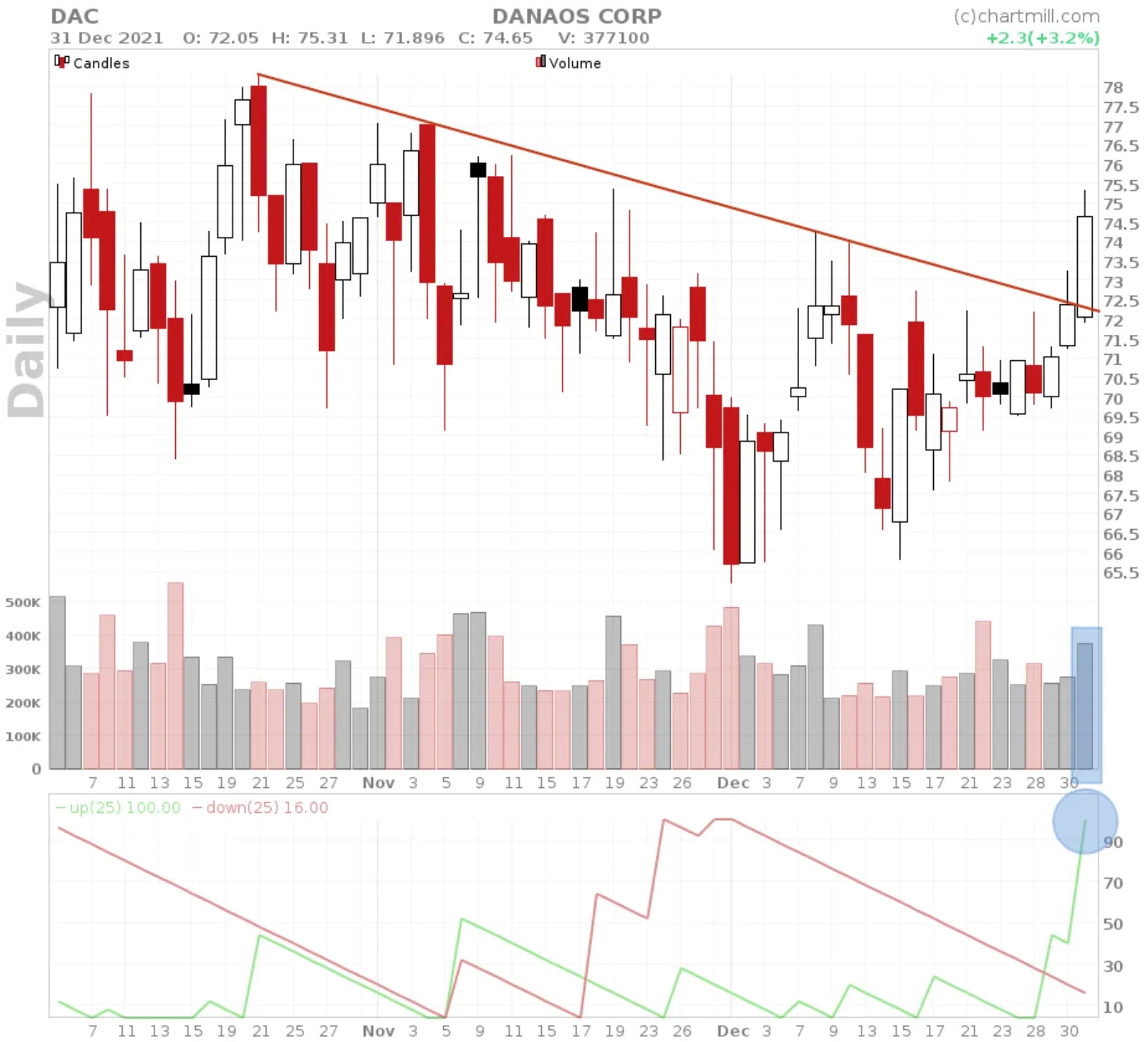
Simply buying based on what the Aroon indicator shows is obviously out of the question. In this case, however, there was the additional element of the price breaking through the downward trend line quite convincingly. The price rose by more than 3% but the momentum was lacking due to insufficient volume. A first small test position aimed at the long term with a stoploss below the existing low (< $65,5), speculating on a new positive trend is well worth the risk.
The first week of January 2022 didn't look good at all. The price fell again below the previous downward trend line. Those who had bought and used a short stoploss below the breakout candle saw their stoploss triggered. However, the Aroon indicator remained positive (Aroon-up > 70 and Aroon-down < 50).
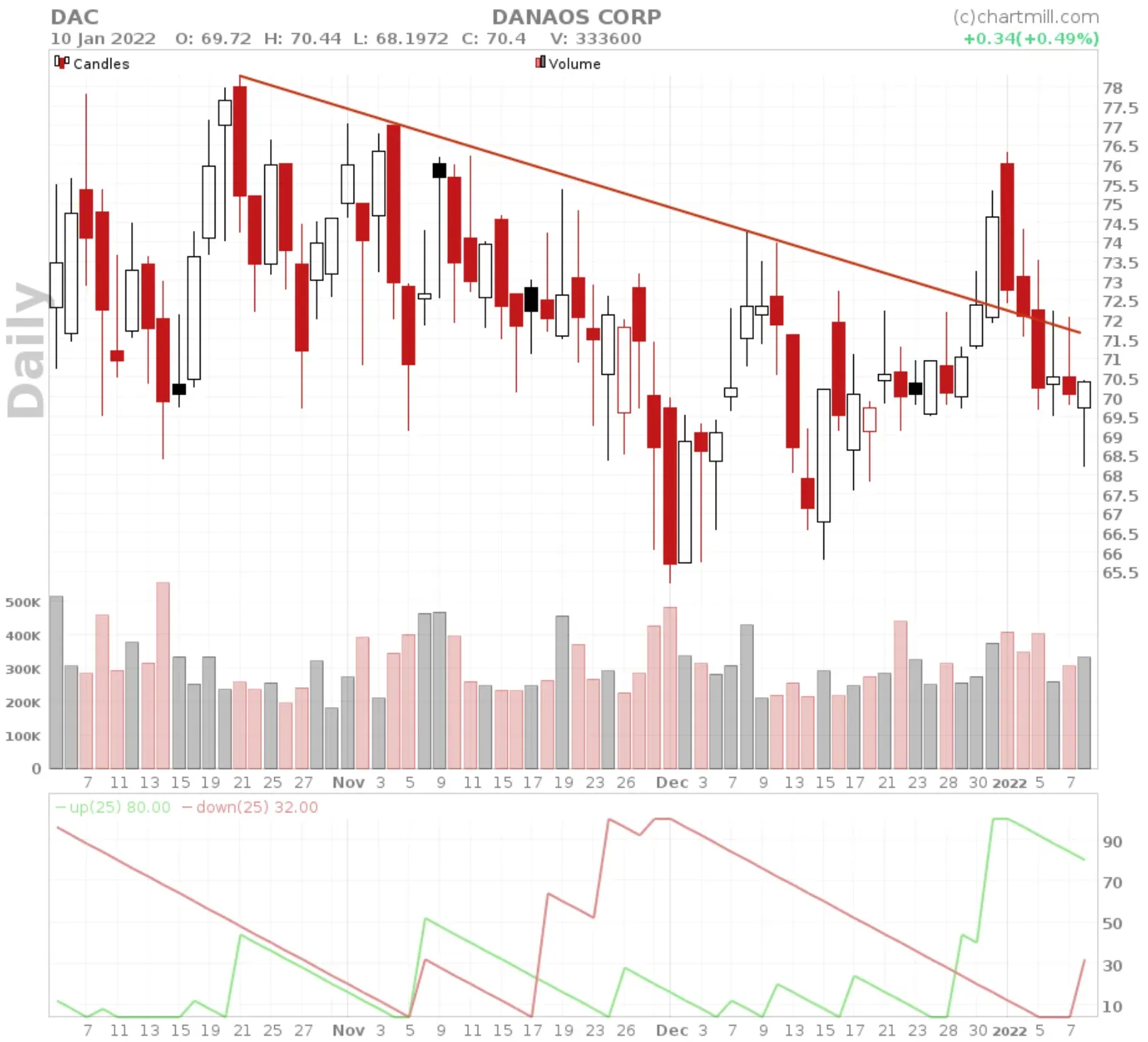
The price managed to recover in the second week of January but remained within the existing price ranges for the time being. The Aroon up continued to fall below the 70 level and the Aroon down to below the 30 level.
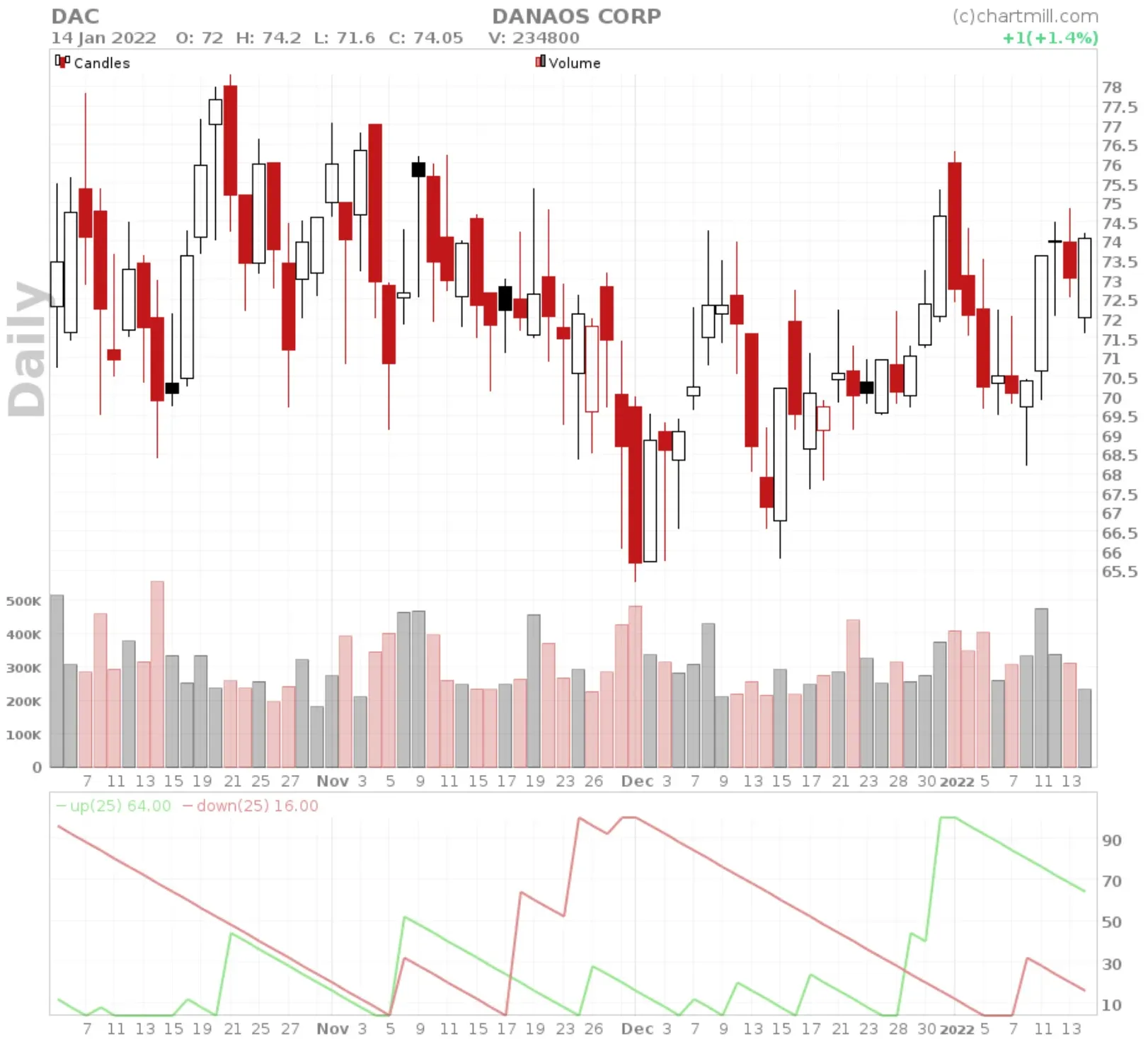
However, on January 18, the price shot up with a close that was 8% higher than the day before. This made the chart look very bullish.
- A strong price breakout under extreme buying volume brought the price above an important horizontal resistance,
- Aroon-up = 100 and Aroon-down < 20 = strong uptrend
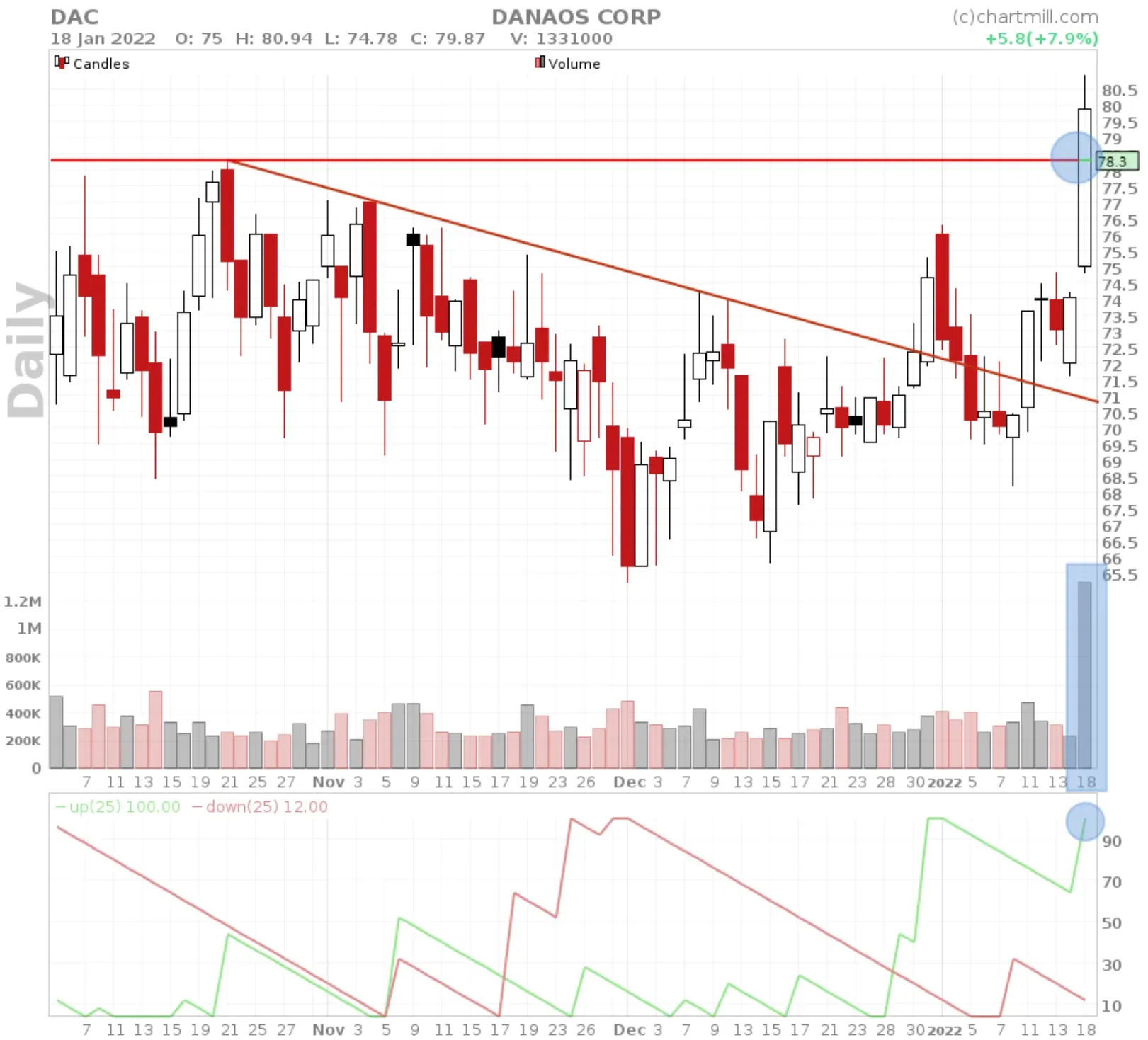
In this case, it was not only the Aroon indicator that indicated that the trend was turning positive, there were also several elements on the price chart itself that indicated this (strong rise/price breakout with very high volume and momentum).
Going long after such an extreme price movement is and will always be a difficult one. The chance that the price corrects first is quite high. Look at the chart on date of January 20 with an SMA20 as overlay and see for yourself how far the price has moved away from this SMA20. Yet the price continued to rise for two days immediately after the initial breakout.
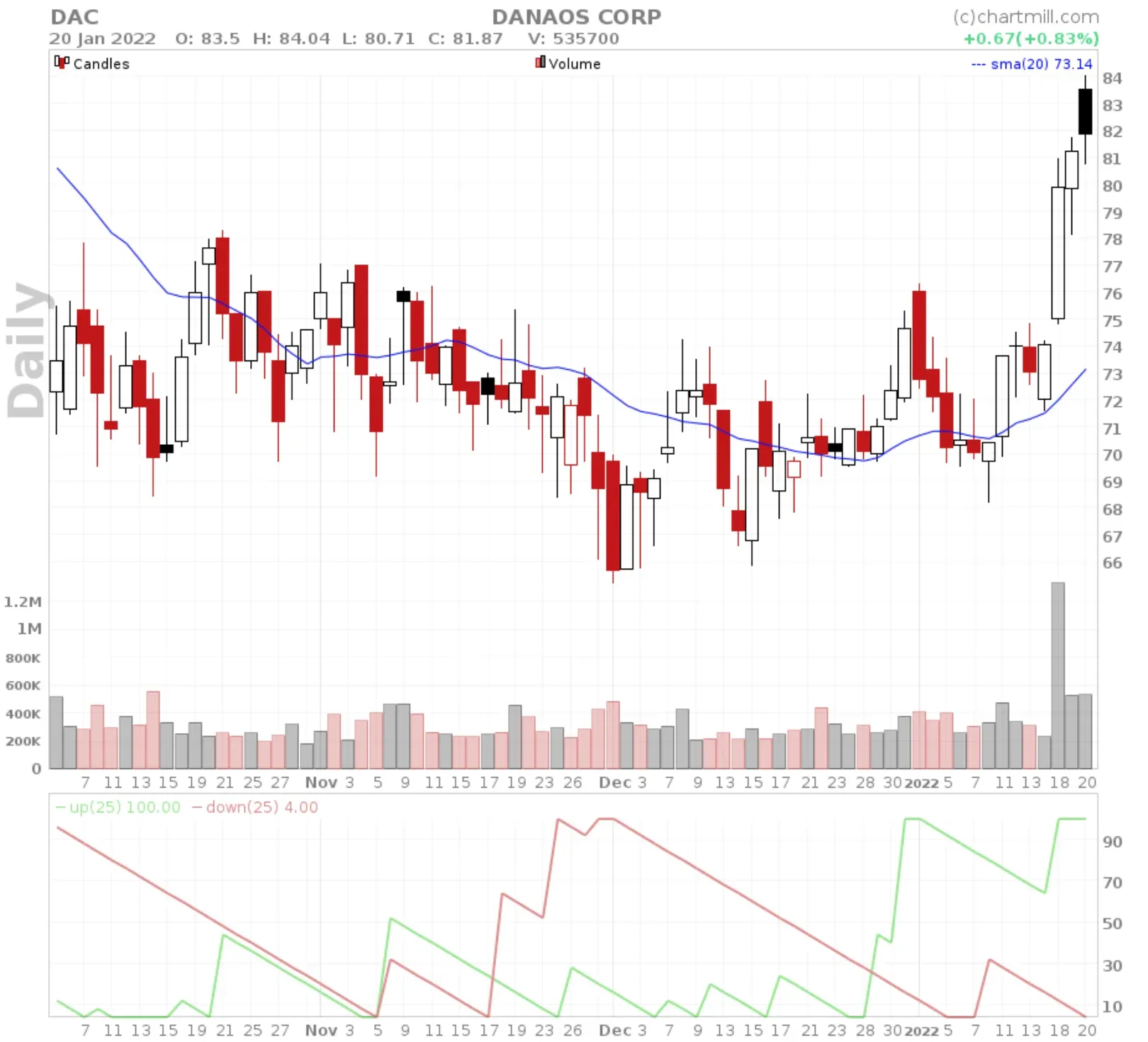
Eventually the price drop did happen. Below is the chart on date of January 24. The price fell back intraday below the SMA20 level, then recovered and finally closed with a doji candle at the high of day. The Aroon indicator remained very bullish. After the initial breakout, this was a textbook example of a low-risk retracement setup with a buy stop just above the last doji candle and an initial stoploss just below the low of the same candle. The stoploss about halfway through the candle, below the rising SMA20 would also have been a - slightly more aggressive - possibility.
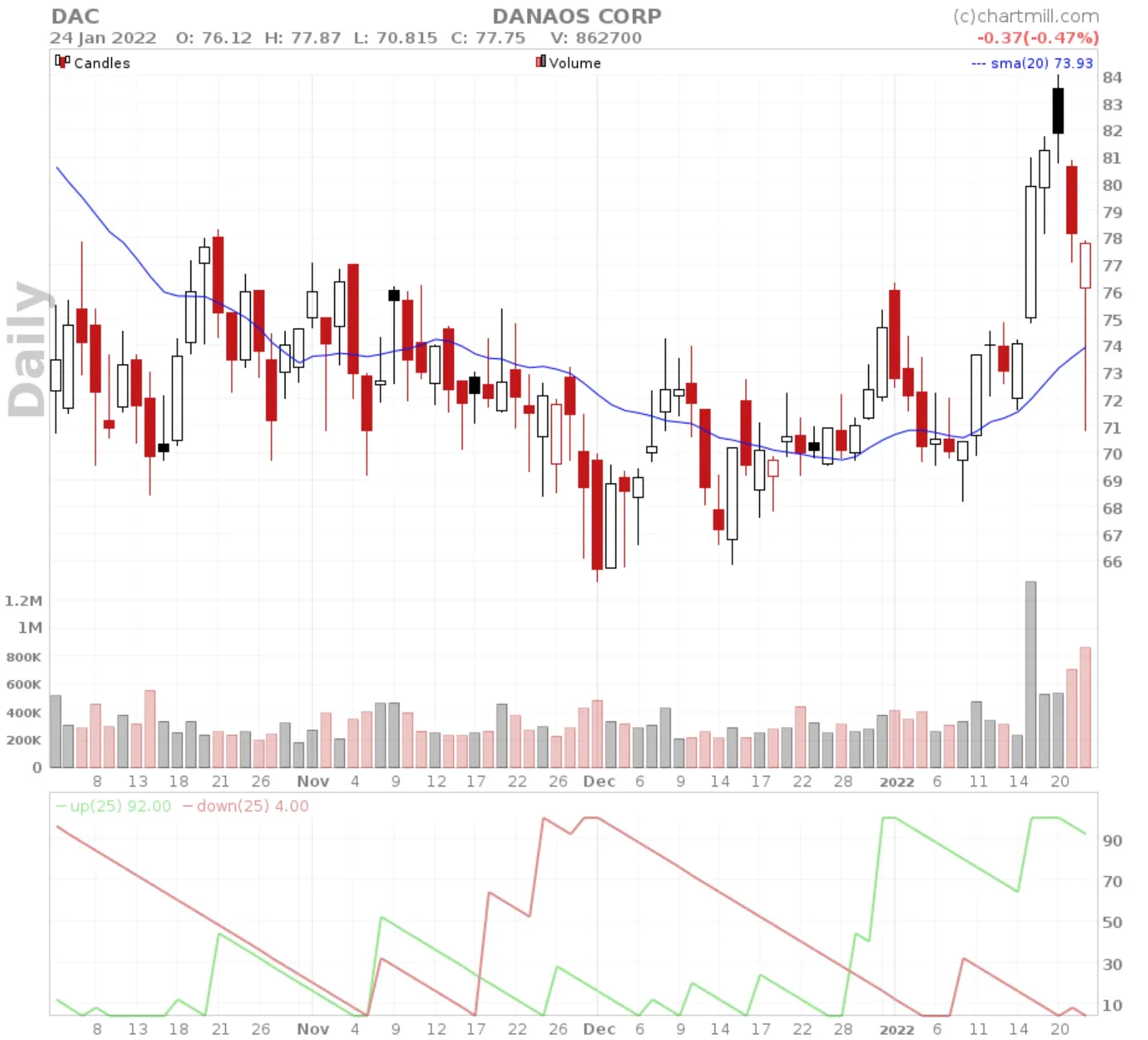
Below is the full breakdown of this setup with the end date on the day I wrote this article.
